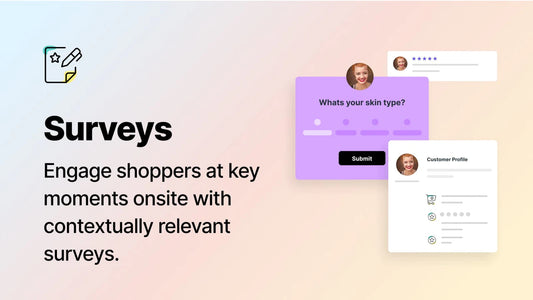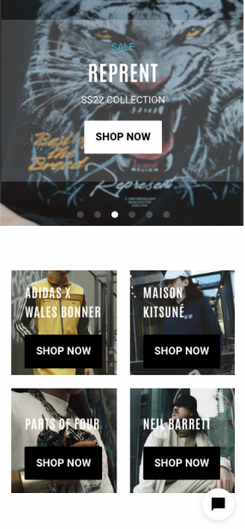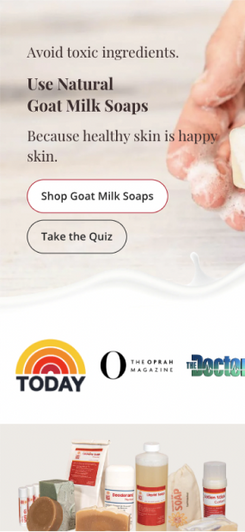Are you tired of losing customers despite your best efforts?
It's time to take control of your Customer Retention Rate. In today's fast-paced and highly competitive business environment, customer retention is more important than ever. But it's not just about keeping the customers you already have; it's also about growing your business.
Returning customers tend to spend more, refer more customers and provide valuable feedback, which can lead to increased revenue and growth. On the other hand, acquiring new customers can be costly and time-consuming. That's why focusing on building long-term relationships with your existing customers is essential.
In this blog, we'll cover everything from understanding Customer Retention Rate, calculating it, and comparing it to industry standards.
Most importantly, we'll provide actionable strategies and tips to help you improve your Customer Retention Rate and create loyal customers who will stick around for the long haul.

What is Customer Retention?
Retaining customers is the ability of a company to maintain long-term engagement and repeat purchases from its existing customer base. It is a crucial indicator of a company's success in providing products, services, or brand experiences that are satisfactory enough to keep customers from switching to competitors.
What is Customer Retention Rate?
Measuring customer retention is crucial in understanding how well your business is retaining its customer base. Before you can improve your retention strategies, it's vital to know where you stand. A good way to do this is by calculating your retention rate, which is a metric that gives you an objective view of your customer retention performance.
Retention rate is a percentage calculated by comparing the number of customers loyal to your business over a given period to the number of customers you had at the beginning of that period. It's a simple calculation, but it can provide valuable insights into your customer retention performance.
The formula is usually something like this:

By measuring your retention rate, you can identify areas where you need to improve and take action accordingly to retain more customers.
How Do You Know if Your Customer Retention Rate Is Good or Not?
Imagine you run a small coffee shop and have 1000 regular customers at the beginning of the month. By the end of the month, 100 of them stop coming, and you also get 150 new customers. You end the month with 1050 regular customers.
To determine your retention rate, you would do this math: (1050 - 150)/1000 = .9 or 90%. This means that 90% of your customers from the beginning of the month remain customers at the end of the month.
Now, it’s easy to think, “90% is amazing!” but it really depends on what's average in the coffee shop industry. A good way to find out is to compare your metrics to that of other coffee shops or look at industry reports. That way, you will better understand where you fall in the grand scheme of things.
Consider your company's goals; if you are a new company, for example, you may have different targets for retention than a more established company. It's also crucial to track your retention rate over time and compare it to previous periods to see if it's improving.
Additionally, you can also look at other metrics related to customer engagement, such as customer satisfaction or customer lifetime value, to have a better picture of how well your business is doing in terms of retaining customers.
Pushing your Customer Retention Rate Up
Now that you know what customer retention rate is and how to calculate it, you might be wondering what you need to do to get it up from being below average to something that's good for your business. Here are a few easy but effective ways to keep your customers coming back:
Set Realistic Expectations
Setting realistic expectations is key when it comes to keeping customers happy and coming back for more.
Take return policies for example; we all know they can be a bit of a slog to navigate, but what if they were clear as day for customers?
Imagine you buy something, open the package, and then realise it's not quite what you wanted. So, you decide to return it. But wait, where's the return policy? Oh, it's buried in the depths of the website? Oh, it's only valid for a week? Oh, you have to pay for shipping?

Now imagine the return policy is easy to find, transparent even - you have a month to return it and return shipping is on the house.
Better, right?
The point is, keeping customers informed and setting realistic expectations can go a long way in creating a positive experience and keeping them coming back.
Build a Customer Rewards Program
A customer rewards system can be a powerful tool for maintaining customer retention. You can increase their loyalty and engagement by providing incentives for customers to continue using your business.
When customers enrol in your rewards program, you can make them feel special by offering perks and benefits. For example, you can provide them with special discounts, access to new products before release, or exclusive promotions. This type of special treatment will work wonders in making customers feel valued and is a key reason why this retention strategy works so well.

One of the most successful customer retention examples is the airline industry's frequent flyer program. These programs reward customers for loyalty by offering them perks such as free flights, upgrades, and exclusive discounts. The more they fly, the more points they earn, and the better the rewards they can redeem.
Customers can receive comparable advantages even if they choose not to join the rewards program. For instance, you might add a discount code in the order confirmation email you send to each customer after they make a purchase. Doing it this way can increase client loyalty and retention by providing value without them having to sign up for anything.
Determine Customer Lifetime Value
A crucial aspect of measuring customer retention is determining the Customer Lifetime Value (CLV) of your customers. It represents the financial value of a customer over the course of their relationship with your business.
Repeat customers tend to have a higher CLV than new customers, as they have already been acquired, and your investment in acquiring them has already been made. These customers are often your most loyal and are the most likely to refer other potential customers to your business.
Determining CLV is a vital step in understanding how much to invest in retaining customers, and it can also be used to forecast future revenue.
Unsure of where to begin with CLV? Check out this piece that can help answer all of your questions!
Listen to Your Customers
Listening to customers is crucial in understanding their needs and wants and ensuring they’re satisfied. By understanding what customers like and dislike about your products or services, you can make necessary improvements to meet their expectations.

This means taking customer complaints seriously and seeing them as an opportunity to receive some free feedback and make things better. And whatever changes you make based on customer feedback, you show that you value their opinions and are committed to improving the customer experience. This can help build trust and loyalty, increasing customer retention and positive word-of-mouth recommendations.
Lending an ear to customers also helps you discover potential new opportunities, like new products or services to offer or ways to improve your current offerings, which helps you stay ahead of the competition with a continually growing business.
Provide easy ways for customers to share their thoughts and feedback. Make use of a customer satisfaction survey, ensure your contact details are readily available and have a dedicated team to respond to customer queries.
Go the Distance with Klaviyo
Sending emails to your customers is not only a great way to keep them informed and engaged, but it can also play a considerable role in retaining them as well. Even emails that aren't directly related to retaining customers can still contribute to it. How? Every email is an opportunity to set expectations and build a relationship with your customers.
Imagine receiving an order confirmation, a shipment sent confirmation, and a follow-up thank you email. Not only do these emails provide valuable information, but they also show customers that you care about them and their experience.
But what if you want to take it a step further?
Platforms like Klaviyo allow you to segment your customer base and create personalised email campaigns based on factors like purchase history, spending habits, and more. This means you can tailor your messaging to specific groups of customers, which can lead to even higher levels of loyalty and retention.
With so many people using messaging apps for personal communication, emails can sometimes be overlooked. But that's actually an advantage for businesses, who can use it to stand out!
Power Your Ecommerce Growth
Success in the eCommerce world doesn't simply come from attracting new customers but also in giving the ones you already have a reason to stay. Instead of pouring all of your resources into the never-ending game of customer acquisition, start investing time and effort into fostering relationships with current & previous buyers using our tried and tested strategies!
Better yet, let us walk the road of customer retention with you by giving us a call today.








